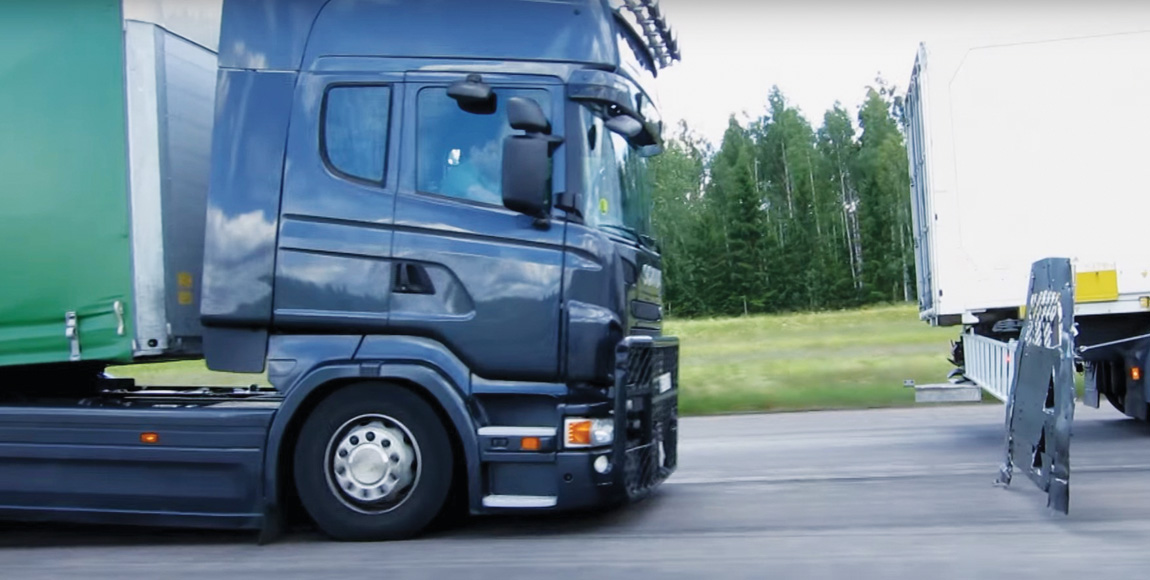Caring for the first line of defence

Braking systems on commercial vehicles are, arguably, one of the most important components as they help prevent accidents. They are, however, under tremendous stress. MARISKA MORRIS investigates how to take care of braking systems
Transport operators have a responsibility to ensure the safety of their drivers and the general public when transporting goods. Faulty braking systems on commercial vehicles can have devastating consequences, as the accidents in Pinetown (2013) and Alberton (2014) demonstrated. In both cases, the vehicle brakes failed as the vehicle was descending a hill.
For the most part, brake failure can be prevented with the correct maintenance and regular inspections. Older or heavy commercial vehicles – especially those travelling on routes that put strain on the braking system, such as a mountain passes – will require more frequent inspection.
Brakes should be included in the pre- and post-trip inspections. The driver should undertake the inspection should know what to look for and report anything suspicious – including any noises. While a squeaking noise, for example, could be something as harmless as dust on the brake pads, it could potentially be something more serious.
The brake checks should determine whether all the relevant parts are secure, not damaged or leaking and free of any oil, grease and debris. To set up a comprehensive checklist, consult with a mechanic or the original equipment manufacturer (OEM), especially if the vehicle has unfamiliar or new technology.
The OEM’s suggested timeframe for maintenance should be followed and the braking system should be replaced with original parts. Sub-par or non-genuine parts could compromise the performance of the braking system, and it could wear down more easily, or break. This could result in unplanned down time, or – in the worst-case scenario – an accident.
Besides following the OEM’s suggested maintenance intervals, the route and driver behaviour should be taken into consideration. Just as a challenging route can put more strain on the vehicle, so driver behaviour can impact on how frequently transport operators need to perform maintenance or inspections on the braking system.

On its website, Arrive Alive states: “With trucks, the sheer size and momentum results in much greater friction forces, resulting in greater temperatures and much earlier failure of components. Overuse of any of the systems, like brakes, can result in extremely abnormal wear or friction, which can lead to failures – like failed brakes – or systemic failures like skipping a particular gear and not being able to engage it again.
“The most prevalent factor that leads to truck crashes would be a lack of understanding of the fine balance between the various systems.” Thus, driver behaviour plays an important role in whether the brakes are able to perform, even when under tremendous pressure. Drivers should be trained in how to use the vehicle efficiently and be familiar with the vehicle before setting off on a journey.
Drivers should also be familiar with the route. A mountain pass, for example, requires a lot of skill to keep the vehicle at a slow, safe speed. Arrive Alive explains: “Selecting the correct gear, controlling the speed and maintaining a low enough speed before the descent is important in order to turn and stop safely at any time.”
The organisation suggests a mentorship programme where more experienced drivers transfer their skills to new drivers. It is important, however, to also ensure that drivers are familiar with any new technology on the vehicle.
While regular inspections, maintenance and replacement of braking systems, together with good driver behaviour can prevent brake failures, there is always a possibility of an oversight. In this case, the driver needs to be skilled in controlling the vehicle even without this crucial component.
There are many examples of truck drivers who were able to avoid an accident even when the vehicle’s brakes failed.
A video recorded by Paul Maynes in 2012, for example, shows how a truck driver was able to warn other motorists and safely manoeuvre the vehicle into an arrester bed, while truck driver Eddie Prinsloo was able to bring his vehicle to a stop by driving into a steep embankment and using the grass as a natural braking system in 2016.
A good knowledge of the route to be travelled will also mean the driver will know where the arrester beds are located, or of other areas where the vehicle can safely be brought to a standstill. Transport operators can send their drivers for advanced or defensive driving courses to ensure they are prepared for every eventuality and are able to calmly respond.
Various OEMs provide advanced training courses and the National Occupational Safety Association (Nosa) also offers a course on operating a heavy-duty vehicle, which includes information on performing inspections, identifying road accident factors, driver behaviour and collision prevention.
It is always better to be prepared. Transport operators should invest in upskilling drivers and enforce strict inspection and maintenance regulations to prevent brake failures and prepare for the potential worst-case scenario.
Published by
Mariska Morris
focusmagsa




